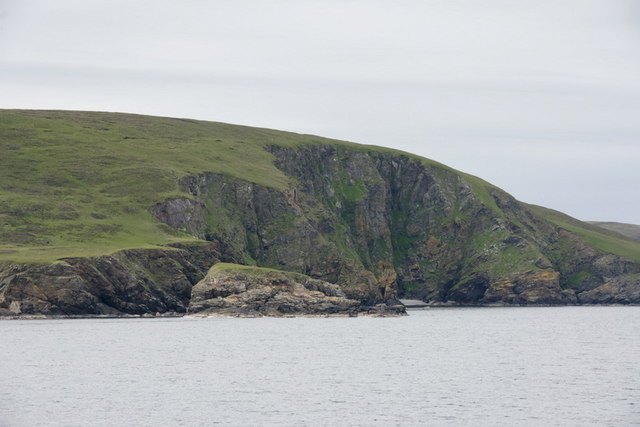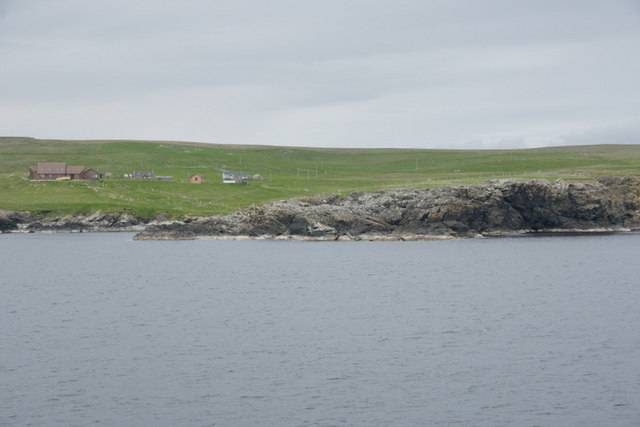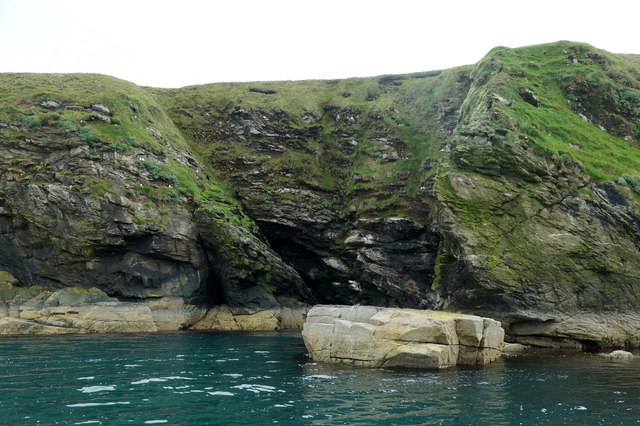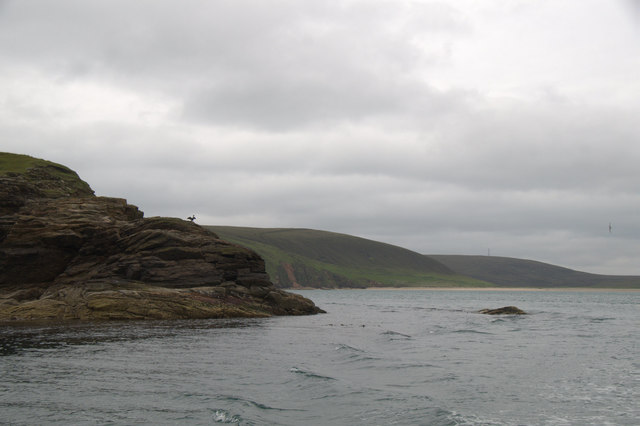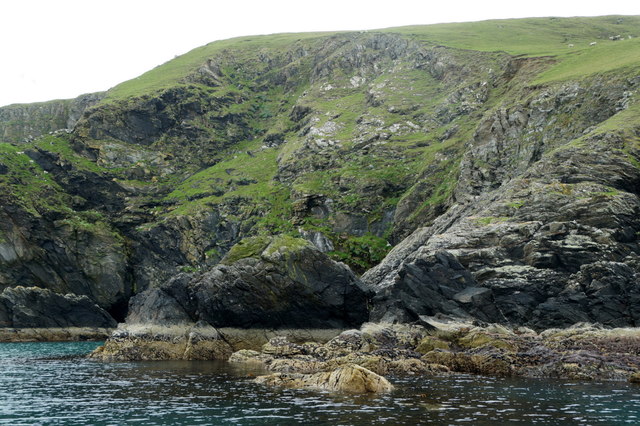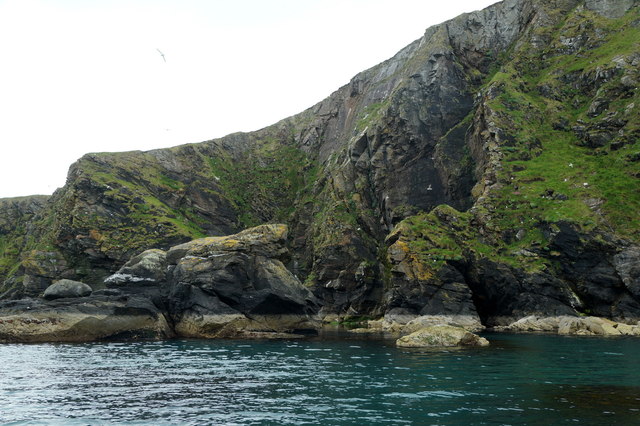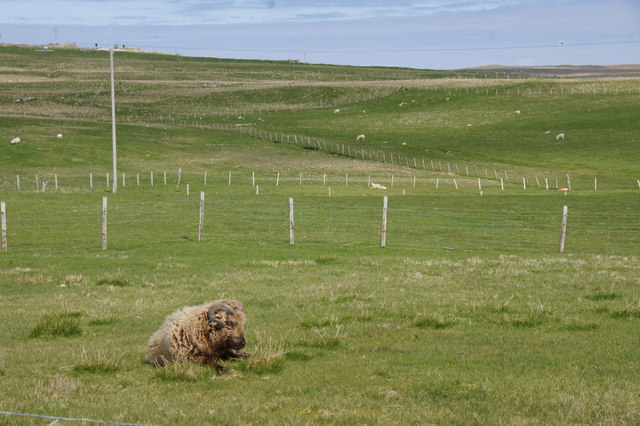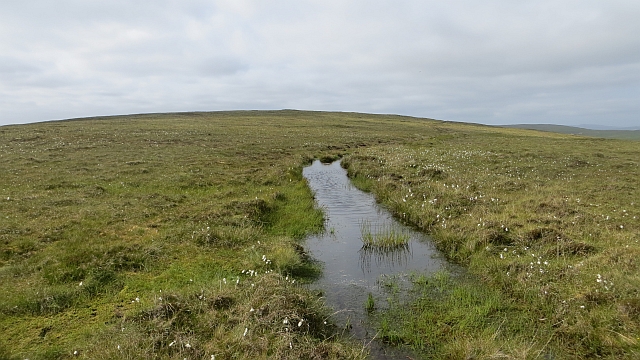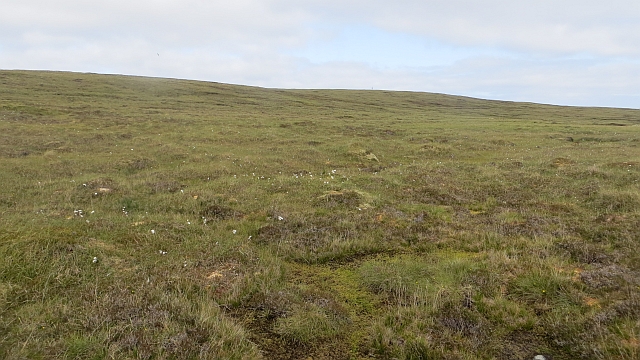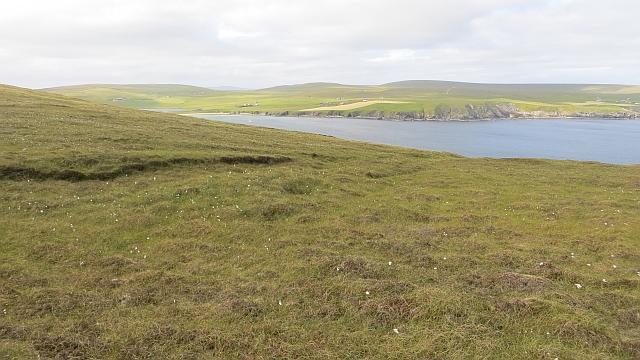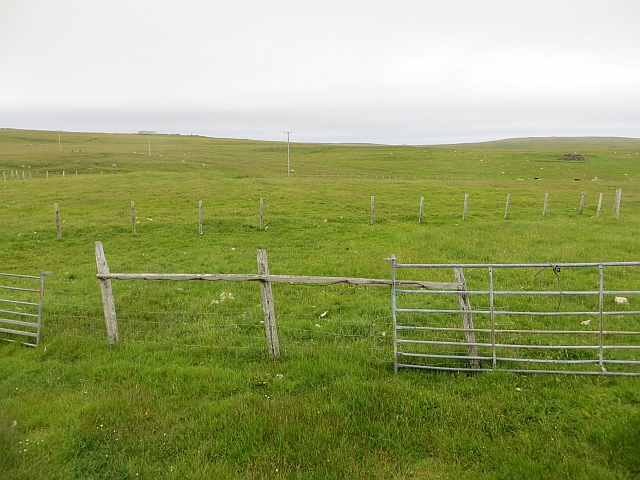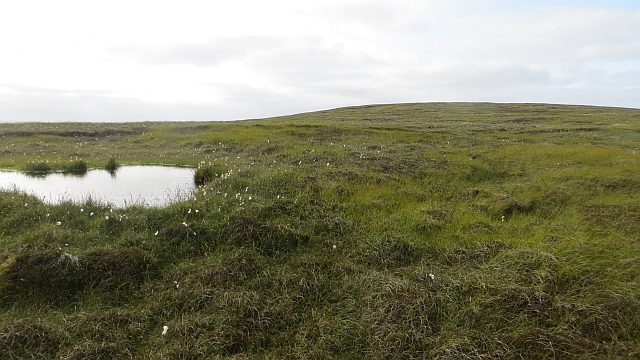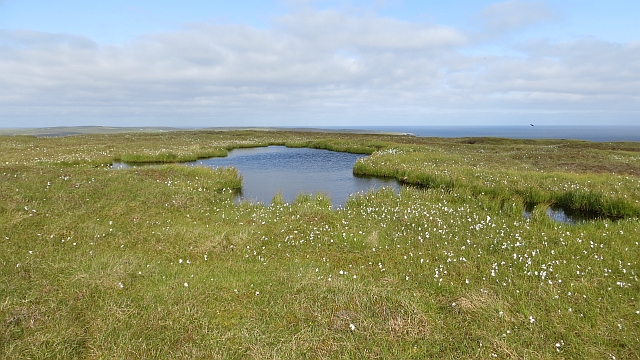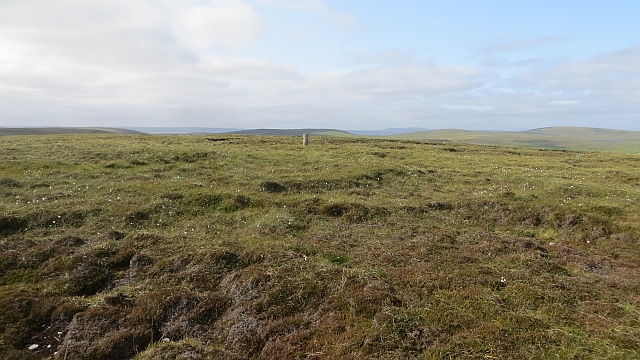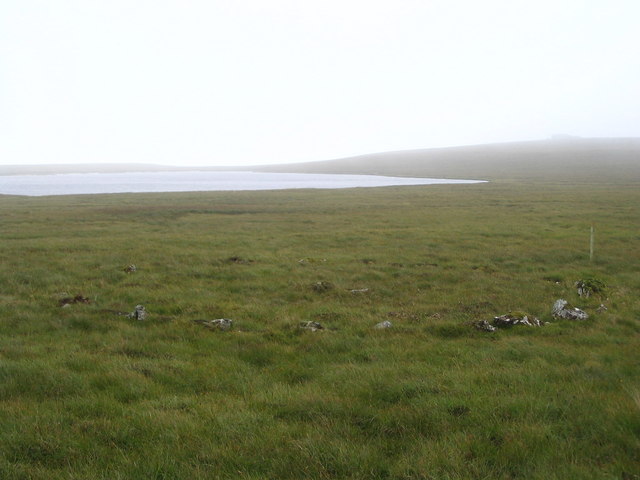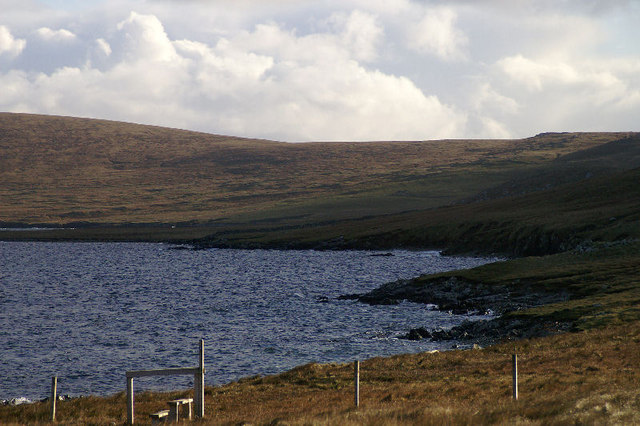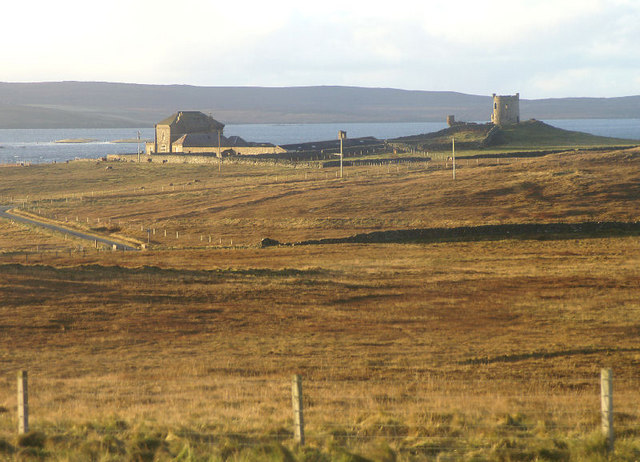Robis Geo
Coastal Feature, Headland, Point in Shetland
Scotland
Robis Geo
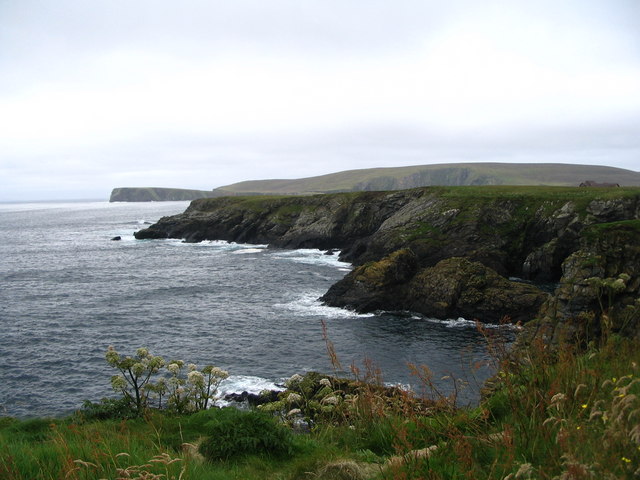
Robis Geo is a prominent coastal feature located on the rugged Shetland Islands, situated off the northeast coast of Scotland. It is classified as a headland, characterized by its sheer cliffs and rocky terrain. The geo is positioned within the Northmavine peninsula, specifically on the western coast near the village of Hillswick.
The headland of Robis Geo is renowned for its stunning natural beauty and dramatic landscape. Its towering cliffs, which reach heights of up to 100 meters, provide a strategic vantage point to overlook the surrounding North Sea. The cliffs are formed from layers of sedimentary rock, showcasing a variety of colors ranging from dark gray to reddish-brown. These rock formations are evidence of the region's geological history, dating back millions of years.
Robis Geo is also known for its diverse wildlife. The surrounding waters are home to a plethora of marine species, including seals, dolphins, and various seabirds such as puffins and guillemots. The headland serves as an important breeding ground for these birds, drawing birdwatchers and nature enthusiasts from around the world.
In addition to its natural beauty, Robis Geo offers recreational opportunities for visitors. Hiking trails along the cliff edges provide breathtaking views of the coastline and the vast expanse of the North Sea. The area is also popular for rock climbing, as the rugged cliffs present an exciting challenge for climbers of all skill levels.
Overall, Robis Geo is a captivating coastal feature that showcases the rugged beauty and rich biodiversity of the Shetland Islands. Its towering cliffs, diverse wildlife, and recreational opportunities make it a must-visit destination for nature lovers and adventure seekers alike.
If you have any feedback on the listing, please let us know in the comments section below.
Robis Geo Images
Images are sourced within 2km of 60.590425/-0.8791373 or Grid Reference HU6190. Thanks to Geograph Open Source API. All images are credited.
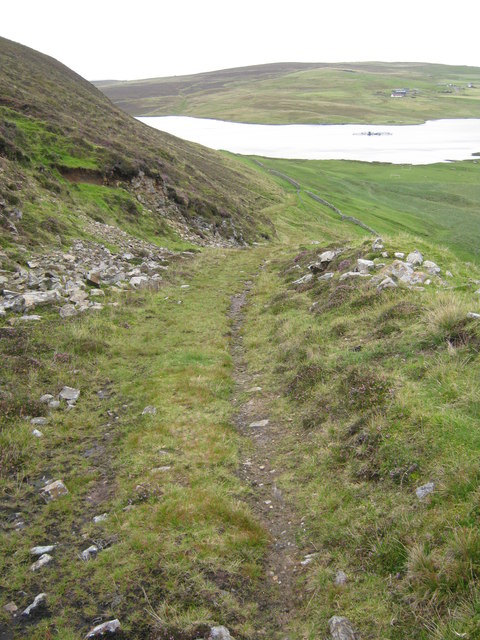
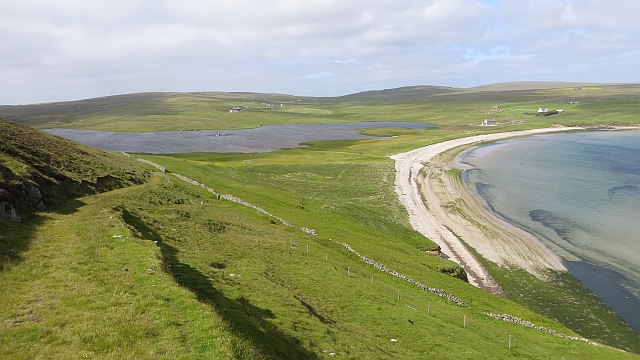
Robis Geo is located at Grid Ref: HU6190 (Lat: 60.590425, Lng: -0.8791373)
Unitary Authority: Shetland Islands
Police Authority: Highlands and Islands
What 3 Words
///once.breathing.clean. Near Houbie, Shetland Islands
Nearby Locations
Related Wikis
Fetlar
Fetlar is one of the North Isles of Shetland, Scotland, with a usually resident population of 61 at the time of the 2011 census. Its main settlement is...
Haltadans
Haltadans, also known as Fairy Ring or Haltadans stone circle, is a stone circle on the island of Fetlar in Shetland, Scotland. This site is a ring of...
Funzie Girt
Funzie Girt (; Scots: Funyie Girt "Finns' dyke") is an ancient dividing wall that was erected from north to south across the island of Fetlar in Shetland...
Brough Lodge
Brough Lodge is a 19th-century Gothic mansion on Fetlar, one of the Shetland Islands, in northern Scotland. Built by the Nicolson family, who were responsible...
Nearby Amenities
Located within 500m of 60.590425,-0.8791373Have you been to Robis Geo?
Leave your review of Robis Geo below (or comments, questions and feedback).
